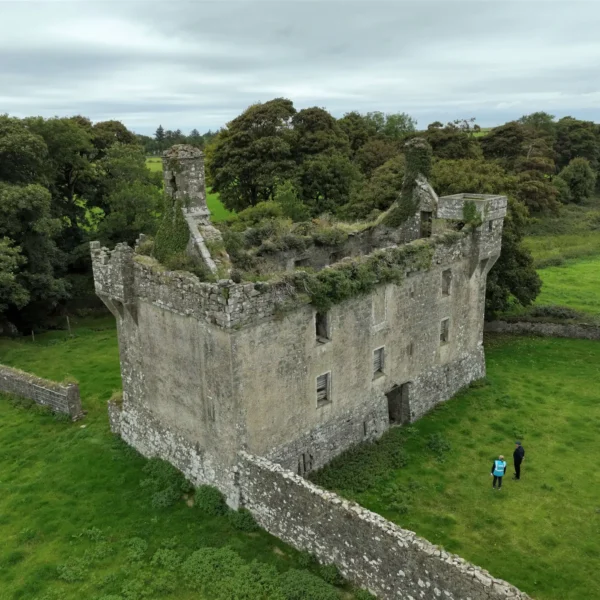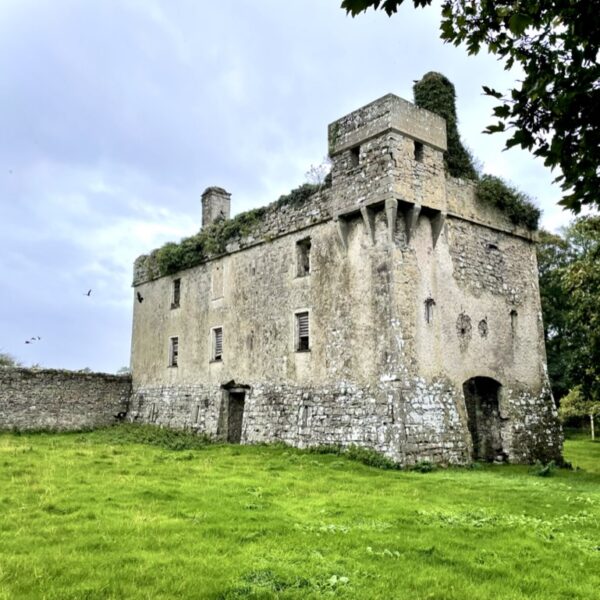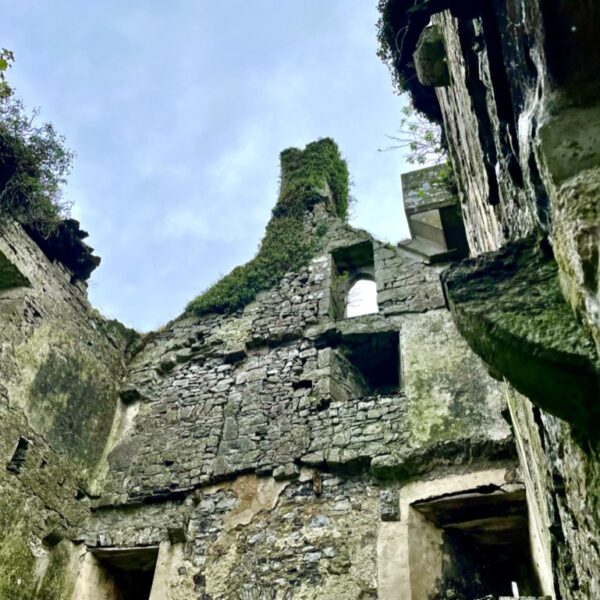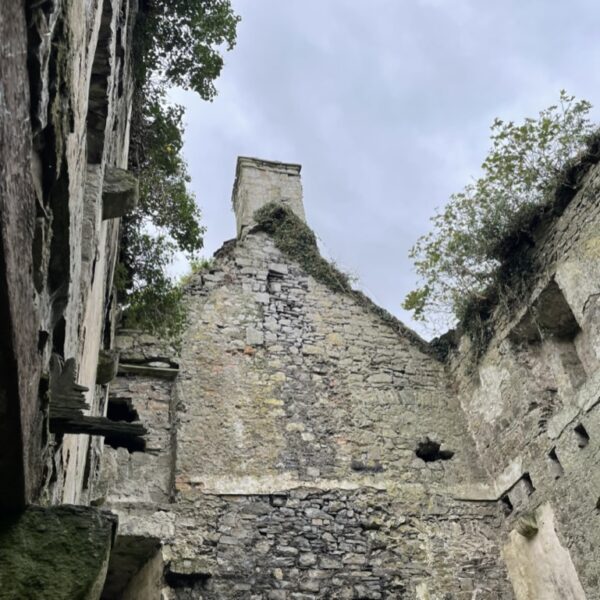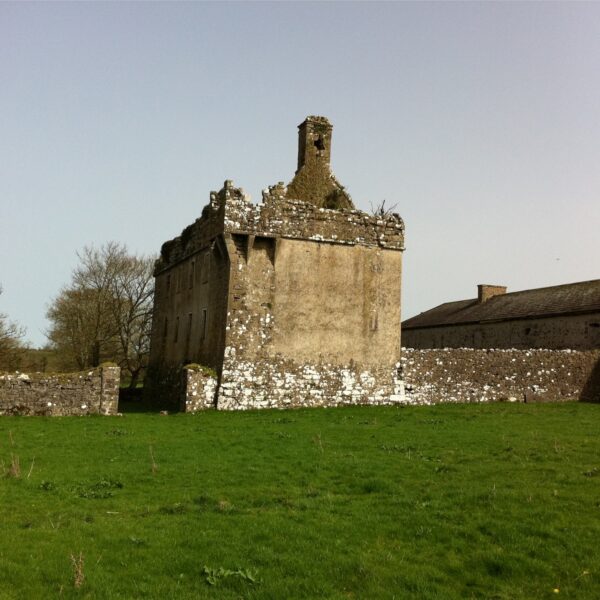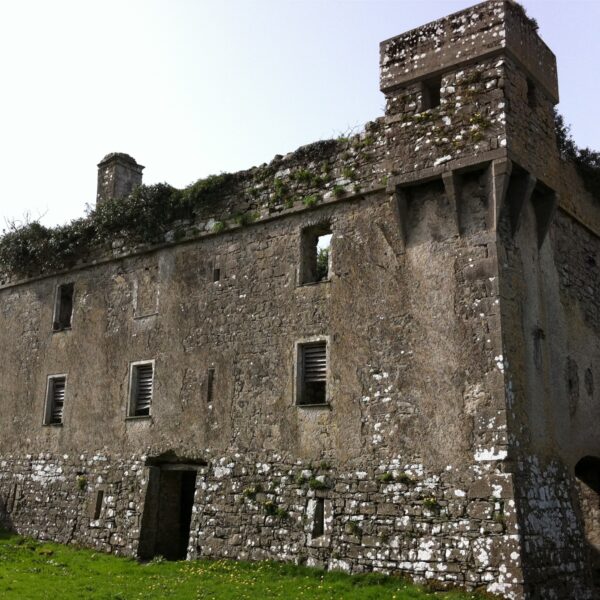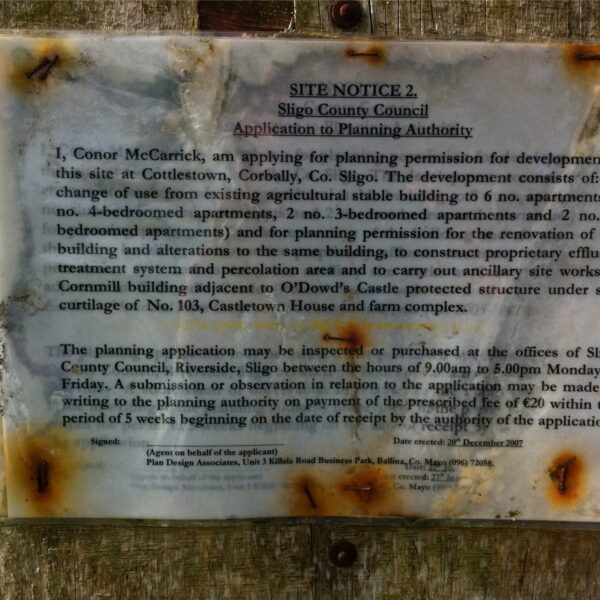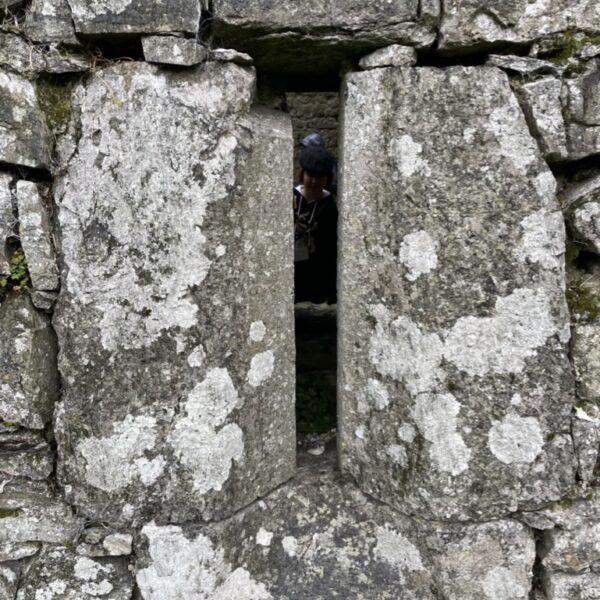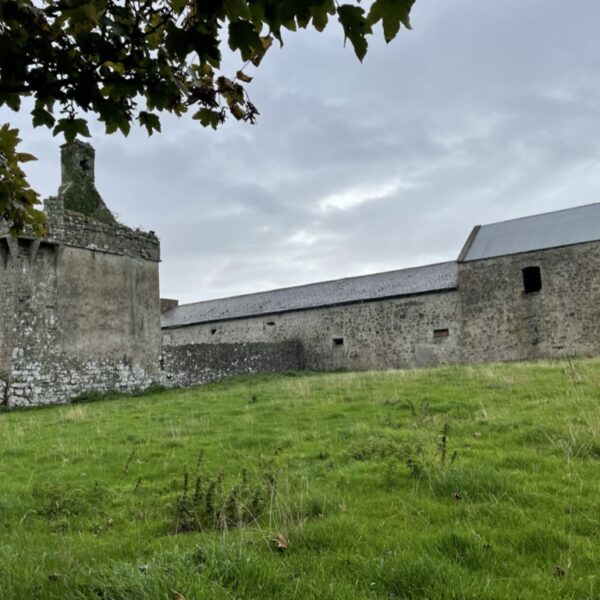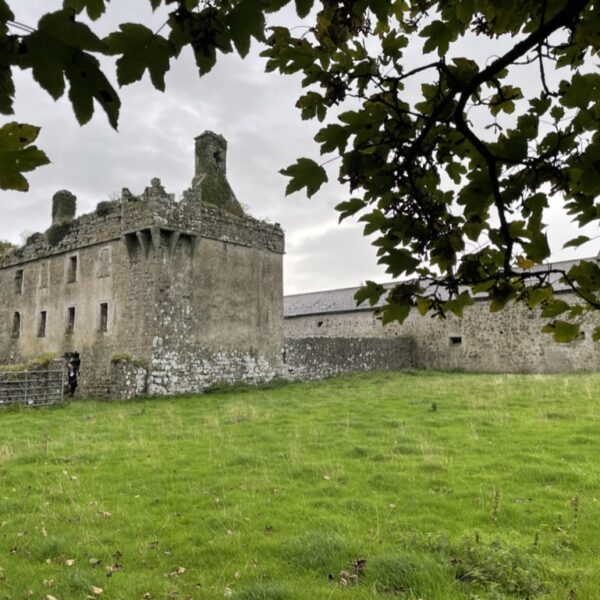Castletown/Cottlestown
January 21, 2025 2025-07-10 3:56Castletown/Cottlestown
Castletown (Cottlestown)
A Timeless Sentinel of O’Dubhda Legacy in Tireragh
Castletown, known locally as Cottlestown, stands as a poignant ruin in the historic barony of Tireragh, County Sligo. This site is a silent testament to centuries of Irish history and the enduring power of the Ó Dubhda clan. Once a vital strategic base for the Ó Dubhda chiefs, Castletown offers a unique glimpse into their formidable presence in Northwest Connacht. It represents a tangible link to a rich heritage of resilience, strategic foresight, and cultural patronage that profoundly shaped the landscape and destiny of the region.
I. Overview: Journey Through Time at Castletown (Cottlestown)
Nestled amidst the rolling countryside of County Sligo, Castletown (Cottlestown) is more than just a ruin; it is a profound echo of Ireland’s Gaelic past. This site, known in Gaelic as “Baile an Chaisleáin,” which translates to “Town of the Castle,” clearly underscores its historical significance as a fortified administrative center and a seat of power for the Ó Dubhda clan. Established in the 13th or 14th century, it served as a strategic point for overseeing their extensive territories in Tireragh and protecting vital trade routes across the western seaways.
The establishment of Castletown was not an isolated event but an integral part of a larger, interconnected, and well-thought-out defensive system employed by the Ó Dubhda. The clan was renowned for ringing their territory with approximately “20 castles” and successfully holding their lands against formidable opposing forces like the Burkes and Birminghams for centuries. This approach to fortification reveals the Ó Dubhda’s military acumen and adaptability in the face of evolving threats, positioning Castletown not merely as a singular ruin but as a crucial component of a sophisticated Gaelic defensive strategy. The decline of Castletown during the 16th-century Tudor reconquest marks a pivotal moment in Irish history, yet its remnants continue to convey the story of a clan that maintained its ground against significant forces for centuries.
II. The Storied Past: Castletown (Cottlestown) Through the Ages
A. Echoes of Gaelic Power: The Ó Dubhda Clan and Early Origins
The Ó Dubhda clan stands as one of Ireland’s most ancient and enduring lineages. For centuries, from the 8th to the 15th, they reigned as Kings of Uí Fiachrach Muaidhe, a powerful sub-kingdom within Connacht. Their sphere of influence, though later confined to the barony of Tireragh, was vast, embracing territories like Erris and Tirawley in Mayo.
The clan’s power was not solely military; they were also a formidable maritime force in the 12th and 13th centuries, controlling western seaways. On land, they demonstrated remarkable resilience, holding their ancestral lands intact against the superior forces of the Anglo-Norman Burkes and Birminghams. This sustained dominance was intrinsically linked to their robust defensive network, famously described as “20 castles” ringing their territory. Castletown (Cottlestown) emerged as a key component of this network, established by the Ó Dubhda clan in the 13th or 14th century. Its Gaelic name, “Baile an Chaisleáin,” clearly denotes its purpose as a central stronghold and administrative hub, reflecting the clan’s strategic foresight in fortifying their domain.
Beyond their military and territorial power, the clan’s influence extended significantly into cultural and intellectual realms. They were patrons of scholars and historians, who produced key works of Irish history and left detailed accounts of their leaders’ ceremonies. This investment in historical records and genealogies served not just to preserve the past but also to legitimize and reinforce their claim to power and their “fortified kingdom”. Castletown (Cottlestown), therefore, was likely a place where such cultural and administrative activities took place, contributing to the broader narrative of the clan as a sophisticated and influential Gaelic power, not solely a warrior clan. This dual legacy of strength and intellect is crucial for a comprehensive understanding of their history.
B. Shifting Tides: The 16th Century and Beyond
The relative stability of the Ó Dubhda’s Gaelic kingdom began to face significant challenges with the unfolding Tudor reconquest of Ireland in the 16th century. Like many other Gaelic strongholds across the region, Castletown (Cottlestown) eventually fell to English forces. This period marked a profound upheaval, leading to the gradual decline of the settlement and the eventual transition of the castle into the ruins observed today. The clan’s leadership structure faced changes, reflecting the shifting power dynamics of the era.
Despite these challenges, the clan continued to play a role in Irish affairs, demonstrating their involvement in the defense of Irish sovereignty.
C. The Ó Dubhda Defensive Network: Castletown’s Place
Castletown (Cottlestown) was an integral part of the Ó Dubhda’s formidable defensive strategy. Their ability to “hold their territory intact against the superior forces of the Burkes and Birminghams” for centuries was directly linked to this robust network of fortifications. The clan utilized a strategic and adaptive blend of defensive architecture, including traditional Gaelic strongholds (like older ringfort sites), adapted Norman castles, and purpose-built tower houses, often referred to as “10-Pound Castles”.
While the precise identification of all “20 castles” remains a historical challenge, sites like Rosslee, Rathlee, Enniscrone, Ardnarea, Castleconor, Carn Amhalghaigh, and Carrowmably have been explicitly identified as Ó Dubhda strongholds. Castletown (Cottlestown), specifically described as a “fortified house” known as “O’Dowd’s Castle” built around 1600, stands as a tangible example of this widespread defensive system. This clarification that Castletown (Cottlestown) is specifically a “fortified house” or “tower house” provides a more accurate historical understanding of the site. It highlights the varied nature of Irish fortifications, which often differed from the larger, more elaborate European castles, and emphasizes the practical, adaptive nature of Gaelic defensive architecture, which prioritized function and resilience over purely symbolic grandeur. This underscores the deep connection between their cultural heritage and military strength.
III. Architectural Marvels: Unveiling Castletown (Cottlestown)’s Design
A. A Fortified House: Enduring Strength and Features
Castletown (Cottlestown) is a prime example of a detached four-bay, three-storey rubble stone fortified house, believed to have been constructed around 1600, falling within the 1550-1650 range. Its design speaks to its dual purpose as a secure residence and a defensive structure. The building features a rectangular plan, with remnants of its original lime render finish still visible on its masonry walls, indicating a level of preservation that makes it “remarkably intact”.
Key architectural elements include its partially roughcast random rubble limestone walling and a main south elevation with a slightly projecting parapet. Defensive features are evident in the bartizans (small, projecting turrets) at the south-east and north-west corners, supported by pointed corbels. A parapet string course and a battered base further enhance its defensive capabilities. The building also displays square-headed window openings on upper storeys with rendered reveals and stone sills, alongside several defensive slit openings on the ground floor, complete with dressed stone chamfered surrounds and hood moulds. Entrance openings include a segmental-arched opening in the east gable and a square-headed opening to the south. The site is surrounded by grass, with a rubble stone wall linking its south-west corner to the north wall of a corn mill to the south, suggesting a broader functional complex around the fortified house. The interior, even in its ruined state, is noted for retaining what may be original timber work, further underscoring its historical importance.
B. Remnants of a Strategic Past
Though much of the original structure has succumbed to the passage of time, the ruins of Castletown (Cottlestown) still powerfully convey its former strength and strategic importance. Its location, near fertile lands and waterways, was ideal for both defense and governance, allowing the Ó Dubhda clan to oversee their territories effectively. The weathered stones and remaining architectural features invite contemplation of the turbulent past and the resilience of those who inhabited this stronghold.
IV. Legends and Lore: Tales from Castletown (Cottlestown)’s Shadows
A. Whispers of Hidden Riches and Secret Passages
As with many ancient sites associated with powerful clans, Castletown (Cottlestown) is steeped in local legends and folklore. Stories passed down through generations speak of hidden treasures concealed beneath the castle grounds, sparking the imagination of those who visit. These tales often intertwine with narratives of secret tunnels, once said to connect the stronghold to nearby locations, providing escape routes or clandestine access during times of conflict.
B. Guardians of Ancient Heritage: Spectral Inhabitants
Adding to the mystique of Castletown (Cottlestown), local lore suggests that the site is haunted by the spirits of its former inhabitants. These spectral guardians are said to watch over the ancient heritage of the Ó Dubhda clan, their presence a haunting reminder of the lives lived and battles fought within these historic walls. While specific detailed narratives for Castletown (Cottlestown) itself are not widely documented, its existence within the Ó Dubhda territory means it would have been part of the rich oral tradition of the region, where stories of clan feuds, local heroes, and everyday life undoubtedly resonated.
V. Visiting Castletown (Cottlestown) Today: A Glimpse into the Past
A. Location & Access
Castletown (Cottlestown) is situated in the historic barony of Tireragh, County Sligo, Ireland. Its precise location is best described as near fertile lands and waterways, offering a peaceful and picturesque setting amidst rolling countryside.
It is crucial for prospective visitors to understand that Castletown (Cottlestown) is a ruin located on private land. Therefore, explicit permission from the landowner is absolutely essential before attempting to access the immediate vicinity of the ruins. Unauthorized access is strongly discouraged and constitutes trespassing. There are no official opening hours for Castletown (Cottlestown); access is entirely dependent on obtaining prior permission from the property owner. Similarly, there is no admission fee to visit the site, as it is private property.
B. What to Expect
Visitors who are granted permission to explore the site will encounter the weathered remnants of a medieval fortified house. This is not a grand, restored castle but rather an intimate and authentic historical remnant that offers a quiet, contemplative opportunity to connect with a less-explored aspect of Ireland’s past. The experience allows for personal reflection amidst the serene Sligo landscape, providing a tangible link to the powerful Gaelic lineage of the Ó Dubhda clan.
C. Important Considerations
As with any historical ruin, the site may present hazards such as uneven ground, unstable structures, or hidden debris. Visitors who have obtained permission should exercise extreme caution, wear appropriate footwear, and be mindful of their surroundings for their safety. Responsible tourism practices, including leaving no trace and refraining from disturbing any archaeological features or artifacts, are essential to preserve this valuable historical site for future generations.
D. Nearby Historical Gems
The region surrounding Castletown (Cottlestown) is rich with other sites connected to the Ó Dubhda clan and broader Irish history, inviting further exploration of their legacy along the Wild Atlantic Way:
Easkey Castle: Another significant stronghold of the Ó Dubhda clan, located a short distance away, showcasing the clan’s architectural prowess.
Enniscrone Beach: Perfect for relaxation, surfing, or scenic walks along the Atlantic coast, offering stunning coastal views.
Moyne Abbey / Rosserk Abbey: Beautifully preserved Franciscan friaries that offer a glimpse into medieval Irish ecclesiastical architecture and monastic history.
Rath O’Dubhda: A significant historical site in County Mayo.
Carn Amhalghaigh: Near Killala, where a castle was also built.
VI. Conclusion
Castletown (Cottlestown) stands as a profound historical marker, embodying the enduring legacy of the Ó Dubhda clan within the landscape of County Sligo. While its physical remnants are those of a fortified house rather than a grand castle, its significance lies in its role as a vital component of the Ó Dubhda’s extensive defensive network and administrative centers. The clan’s ability to maintain their territory and influence for centuries, supported by both military prowess and intellectual patronage, is powerfully reflected in sites like Castletown. Its weathered stones whisper tales of ancient power, strategic foresight, and a rich cultural heritage that continues to resonate through the barony of Tireragh. For those seeking a tangible connection to Ireland’s Gaelic past and the storied history of the Ó Dubhda, Castletown (Cottlestown) remains a compelling, albeit quietly preserved, destination, offering a unique opportunity for reflection and historical appreciation.
Castletown (Cottlestown)
Baile an Chaisleáin (Town of the Castle)
54°10'39.4"N, 9°05'16.0"W
Cottlestown, Barony of Tireragh
Ballisodare, County Sligo, Ireland
Fortified House
Three-storey rubble stone tower house with defensive features
c. 1600 (Ó Dubhda Clan)
Part of a network of "20 castles" across Tireragh
Not destroyed - exists as ruins
Declined during the Tudor reconquest in the 16th century
Archaeological remains; notable structure still intact
Located on private farmland near fertile lands and waterways
Permission from the landowner is required
No official access paths; uneven terrain and ruins
Strategic seat of the Ó Dubhda clan in Tireragh
Part of a network of defensive castles defending western seaways
Reflects the clan's power, cultural patronage, and resilience
Referred to locally as "O'Dowd's Castle" and likely used for administration
Castletown (Cottlestown) is a vital link to the Ó Dubhda's Gaelic legacy. Its fortified structure illustrates the clan’s strategic foresight, while its ruins whisper of battles, governance, and heritage deeply woven into Sligo's landscape. A powerful echo of Ireland’s medieval resilience.

